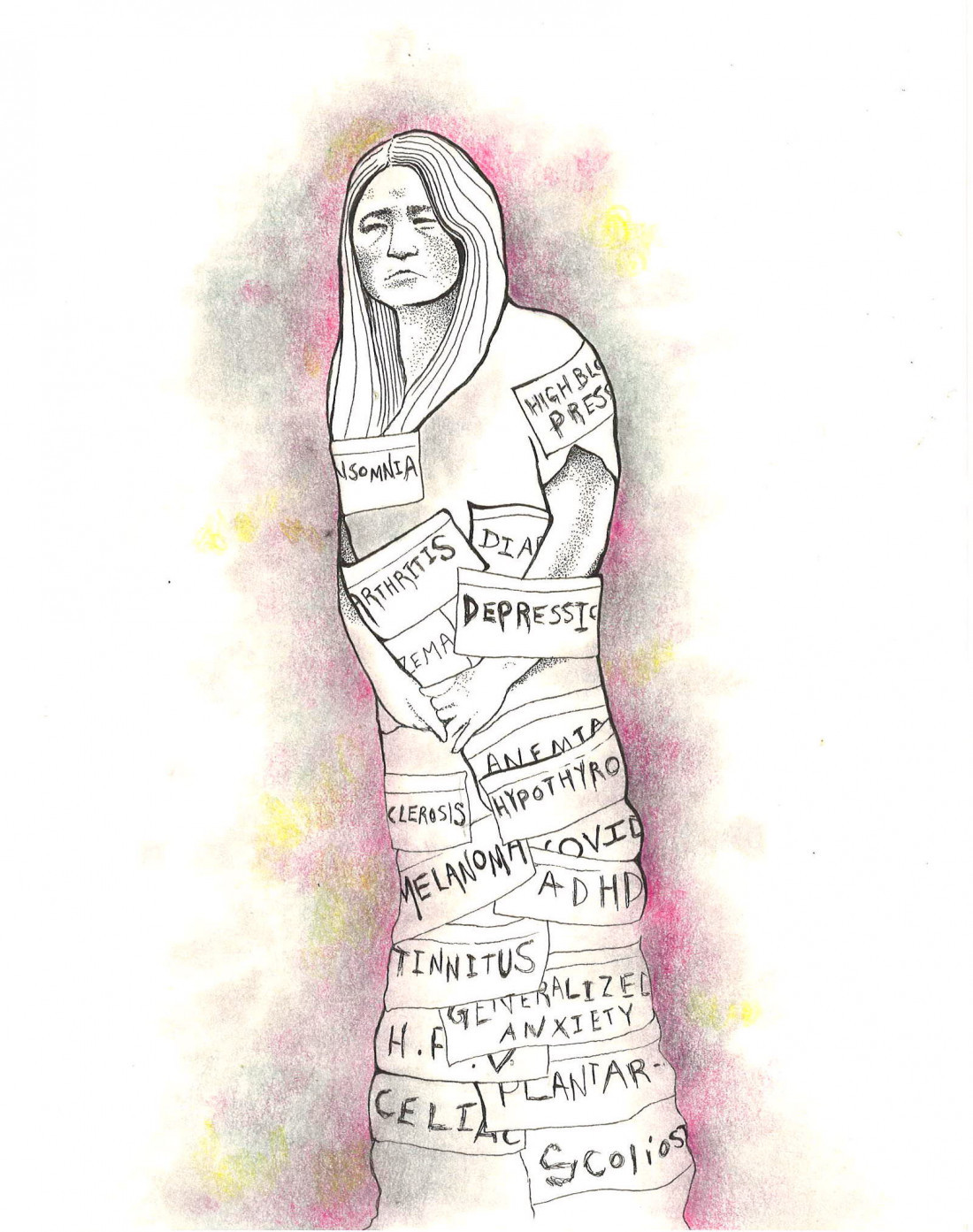Are you there, diagnosis? It’s me, Hannah.
Life on the Borderline
Shortly after giving birth to my first and only child, I was diagnosed with postpartum depression. It was the wrong diagnosis.

Illustration by Gabrielle Funk
I’ve had mental illness for the entirety of my adult life and likely most of my teenage life, as well. Diagnoses came and went, but one label was always the same: atypical.
Major depressive disorder with atypical symptoms, general anxiety disorder with atypical symptoms and complex post-traumatic stress disorder with, you guessed it, atypical symptoms. Those were only the formal diagnoses. Doctors tried a lot of different labels for my unexplainable symptoms. Although they were later removed, this left a lasting mark on my medical file.
I have a complicated relationship with the idea of diagnoses. On the one hand, a proper diagnosis paired with appropriate, multifaceted treatment and follow-up can save lives. On the other hand, rushed diagnoses with hastily written prescriptions and no supplementary treatment can lead to worsening symptoms, isolation, stigma and a higher chance that illness will recur in the future.
At the end of the day, a diagnosis is a label, and labels have a funny way of defining people. This is why it’s dangerous to be overly prescriptive when discussing something as nuanced as mental health.
The thing is, especially in times of high stress (for example, living through a pandemic), not all symptoms of mental illness warrant a formal diagnosis. Similar to when we get a cold and we don’t necessarily go to the doctor, some mental illness symptoms can be treated at home.
The key to home treatment, however, is honesty. If a cold persists for too long, or concerning symptoms arise, we know it’s time to go to a doctor. If our symptoms of mental illness worsen, it’s equally important to seek medical help.
How do we know that it is time to get help? The Centre for Addictions and Mental Health, Canada’s largest mental health teaching hospital, says that if your symptoms start to affect your life, it’s time to see a professional. This could mean seeing the effects of your symptoms on your relationships, your work or education or other aspects of your own well-being.
The first step should always be assessment. To be sure that your care is aligned with your needs, make sure that your symptoms are heard and your concerns addressed before leaving your appointment. If something doesn’t feel right, trust your intuition and ask more questions or seek a second opinion.
As for me, after months of assessment and continual self-advocacy, I finally got a diagnosis that fit and led to treatment that worked. I have borderline personality disorder, the first diagnosis that ever classified me as a typical case.
I’m not here to say that after proper diagnosis, my life has been sunshine and roses. It certainly hasn’t been, especially in the midst of the COVID-19 pandemic. What my life has been is manageable, leaving my brain with room to enjoy life with my two-year-old, and I truly can’t think of a better outcome than that.
Hannah Magnusson is a master’s student in the arts department at Athabasca University. Her research focuses on the intersection of storytelling and advocacy, studying how fostering empathy between different perspectives can build a bridge to understanding and action. She lives on Treaty 1 territory on the shore of Lake Winnipeg.
Published in Volume 75, Number 05 of The Uniter (October 8, 2020)






